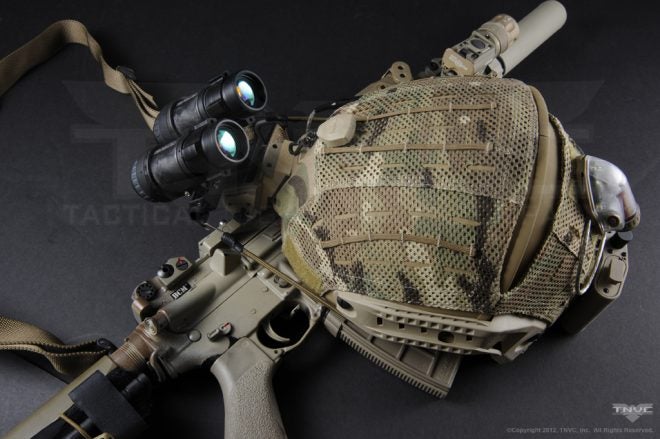Helmets
To get the most out of your night vision, you need to be able to use it hands-free. Often this is done by mounting to a helmet. Common brands of helmets include Ops Core, MTEK, Team Wendy, Crye, as well as many others. On the budget end, you can purchase a nice bump helmet for around $300 and up. This allows you to mount your night vision and enjoy a light, hands-free option but will not provide you any ballistic protection. Norotos and Ops Core also provide mounting options without helmets designed to be as minimal as possible for around $300 to $400.
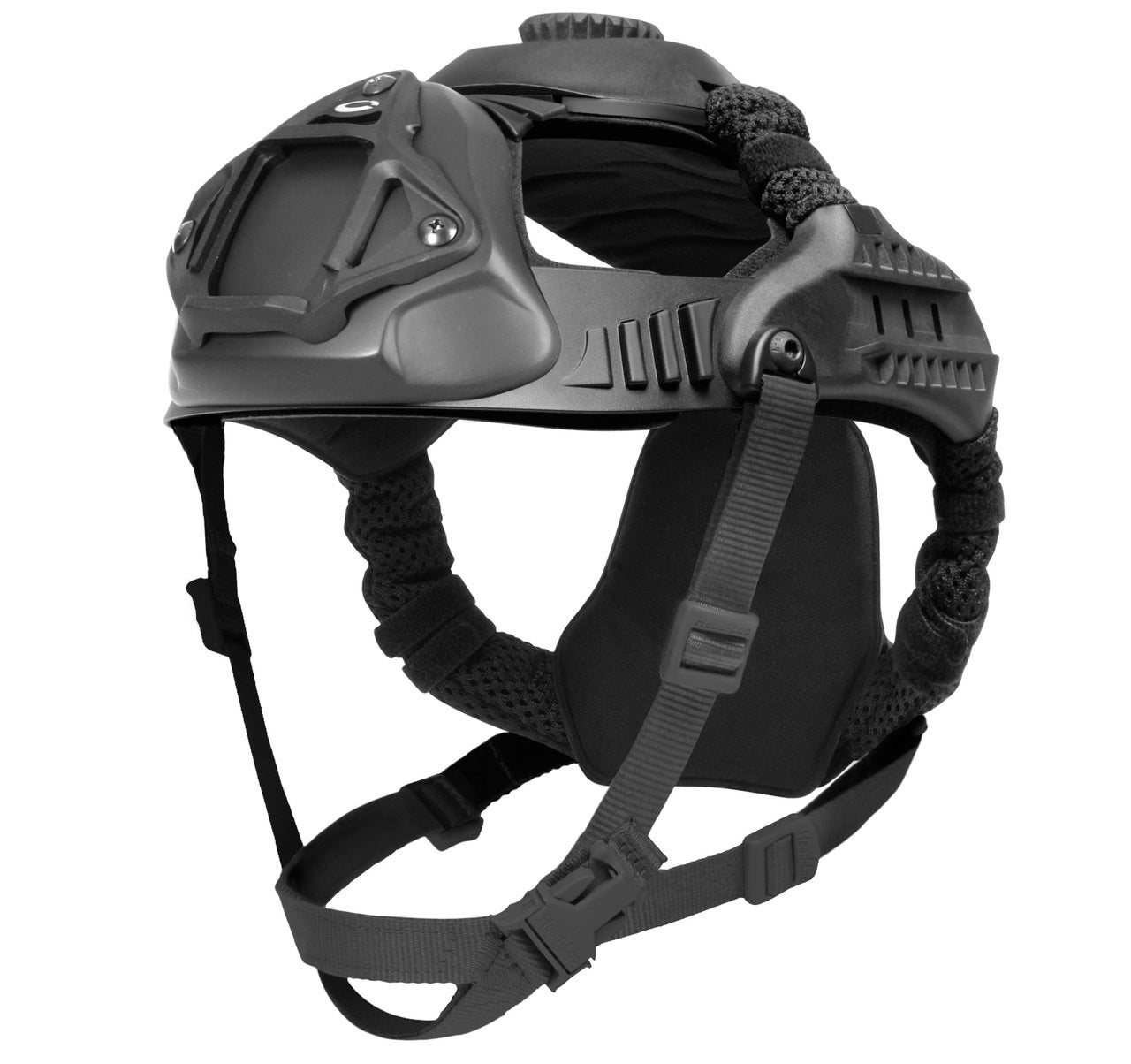
Source: http://cdn7.bigcommerce.com/s-6jlftg9/images/stencil/1280×1280/products/117/453/SkullCrusher_UFP_1__48219.1449680087.jpg?c=2&imbypass=on
Helmet Mounts
Based on the helmet you may have an included shroud or may need to purchase a shroud in order to attach your NOD to your helmet.

Wilcox Shroud
Source: https://tnvc.com/shop/wilcox-l4-one-hole-shroud-front-bracket-w-lanyard/
A quality shroud can cost as low as $60. Wilcox and Norots make quality mounts commonly used for night vision. The mount is an extremely important part to your kit as it allows you to truly customize and fine-tune how your monocular or goggles meet with your face and can cost anywhere from $300 up for a quality mount.
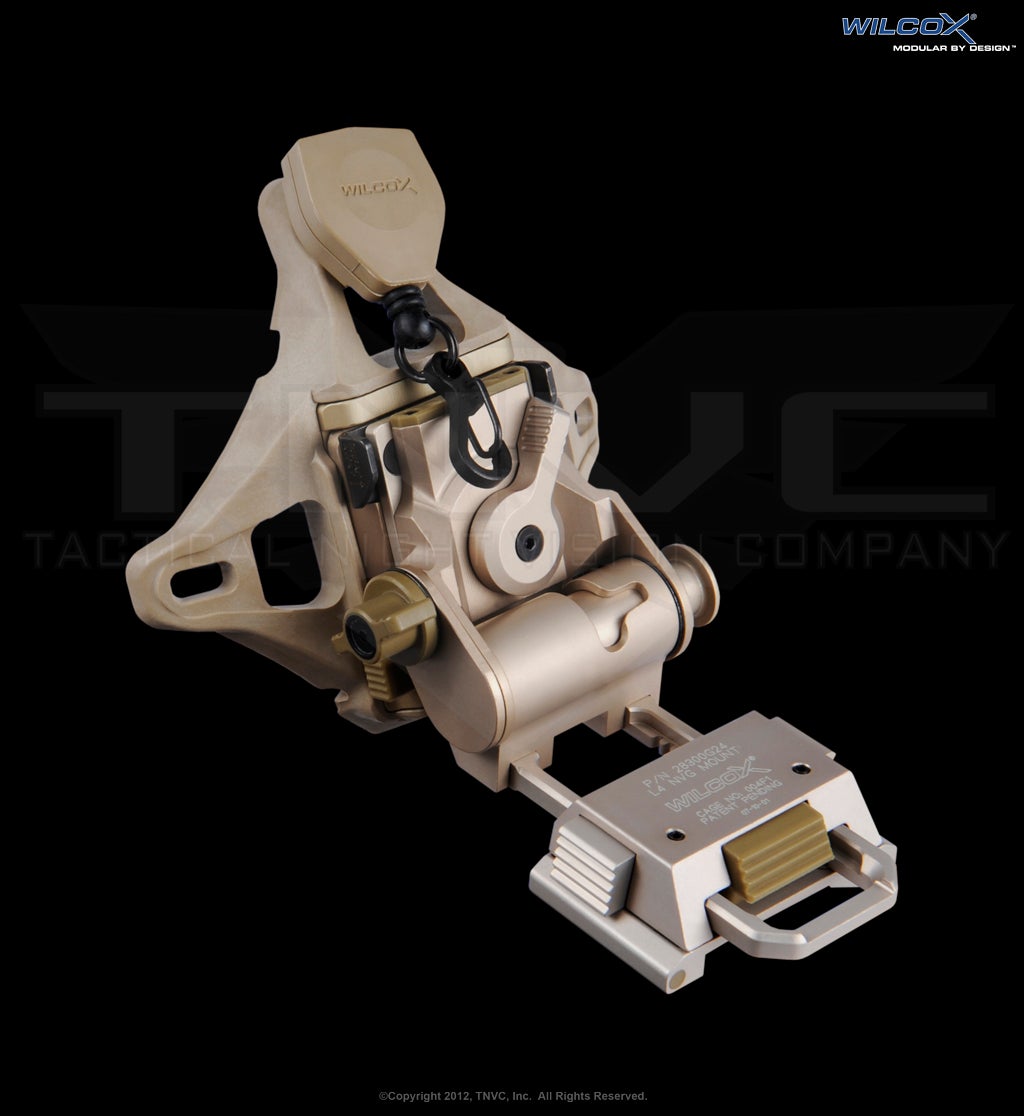
Wilcox mount is shown with a shroud. Source: https://tnvc.com/shop/wilcox-l4-g70-mount-system/
While bump helmets do provide a light setup, many users may want to or be required to have a ballistic helmet for occupational reasons or range requirements. Much like if you were to purchase plates for a vest the helmets also go through specialized ratings to make sure they meet the specs required by the end user.
Revision offers ballistic helmet offerings at nearly the same price as the bump helmets and it can meet the needs of the budget minded shooter who still needs a ballistic helmet. Used ACH helmets can also be retrofitted to allow for a budget-friendly option. Some of the more common helmets that you see such as the Ops Core FAST Maritime or the Crye Airframe start to reach prices from $850 to $1450.
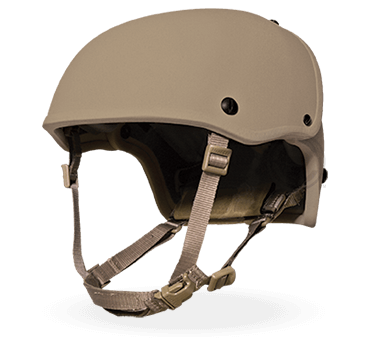
Crye AirFrame Ballistic Helmet
Source: https://www.cryeprecision.com/ProductDetail/hlmm0106lg0_airframe-helmet
Helmet Accessories
While a budget minded user might not be interested in adding many helmet accessories, those with a larger budget and with more specific needs will definitely want to look at options offered to tailor the helmet to their particular NODS and head size. Some helmets come with rails on the sides for mounting accessories such as search or admin lights, camera systems, hearing protection, or a host of other accessories. Covers can be purchased to change the external color of the helmet or add Velcro patches, and bungee systems can be purchased to help retain night vision and prevent falls if they accidentally disconnect from the mount.
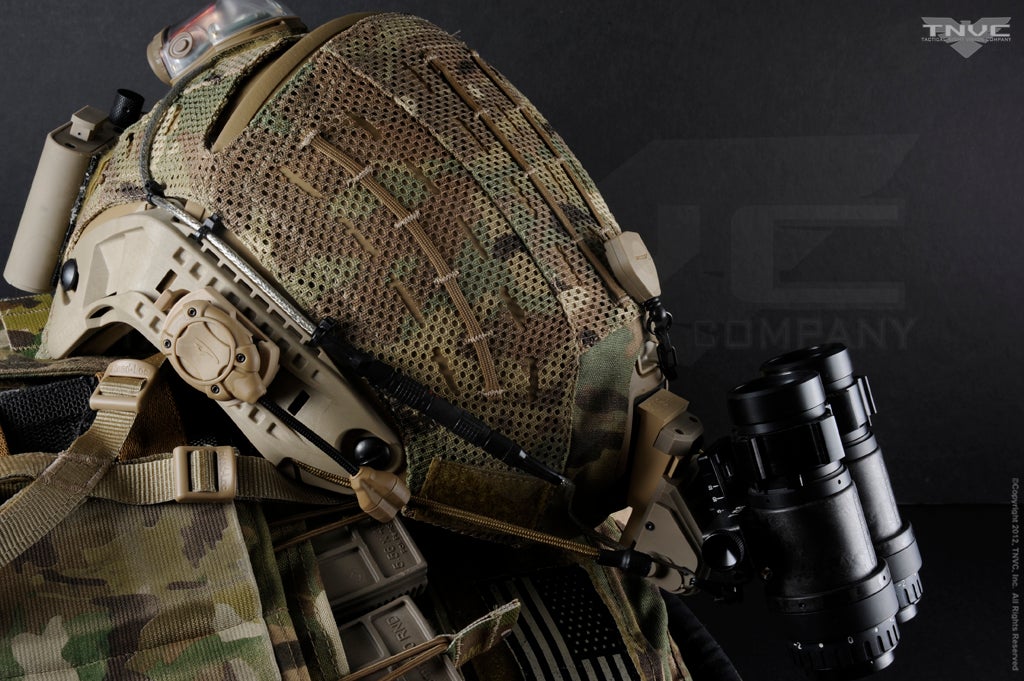
Notice the bungee lanyards, multi-cam helmet cover, admin light, battery pack, and strobe.
Source: https://tnvc.com/shop/crye-precision-airframe-ballistic-helmet/
Another common accessory is a helmet weight system added to the back of the helmet. While this is not necessarily required for a PVS-14, the weight of a dual tube system such as a Sentinel is better balanced when a counterweight is used. Often the counterweights can be used to hold extra batteries or gear so the weight can provide functionality, not just added weight.
During training, many users often utilize IR or visible strobes or lights to help ensure range safety for those without night vision. Sometimes these devices can be factored in to help as a counterweight as well.
IR Aiming Laser
Due to the cumbersome nature of current night vision technology, it is difficult to look through a NOD and utilize a red dot system on a rifle platform. Instead of using standard sighting methods, IR aiming lasers can be utilized so that the laser is still invisible to the naked eye but with night vision you can see your weapon’s point of aim. Much like the night vision itself, the aiming lasers vary greatly in options and price. An affordable aiming laser like a Steiner can be purchased for as low as $775 as a DBAL I2.
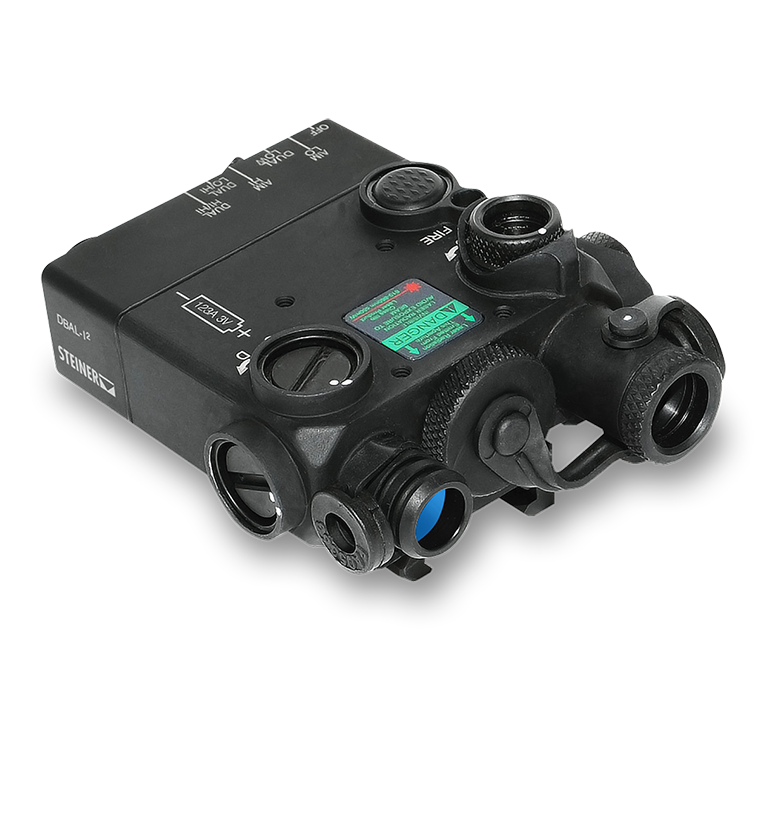
Steiner DBAL I2
Source: https://www.steiner-optics.com/sites/default/files/DBAL-I2-black_0.png
These units are available in a single spectrum with an IR aiming laser and IR illuminator or an IR aiming laser and a visible laser. Some units offer an IR laser slaved with a visible laser to enable the user to zero the laser without the use of NODS. Some units will also offer an infrared illuminator. The illuminator acts as an IR flashlight and helps illuminate the area where your weapon is pointing to allow for better threat identification and a clearer view through your NODS by providing an IR light source and not just functioning off of ambient light.
The next step up would be a DBAL A3. This unit runs about $1250 and provides the opportunity to use IR and visible aiming lasers as well as an IR illuminator.
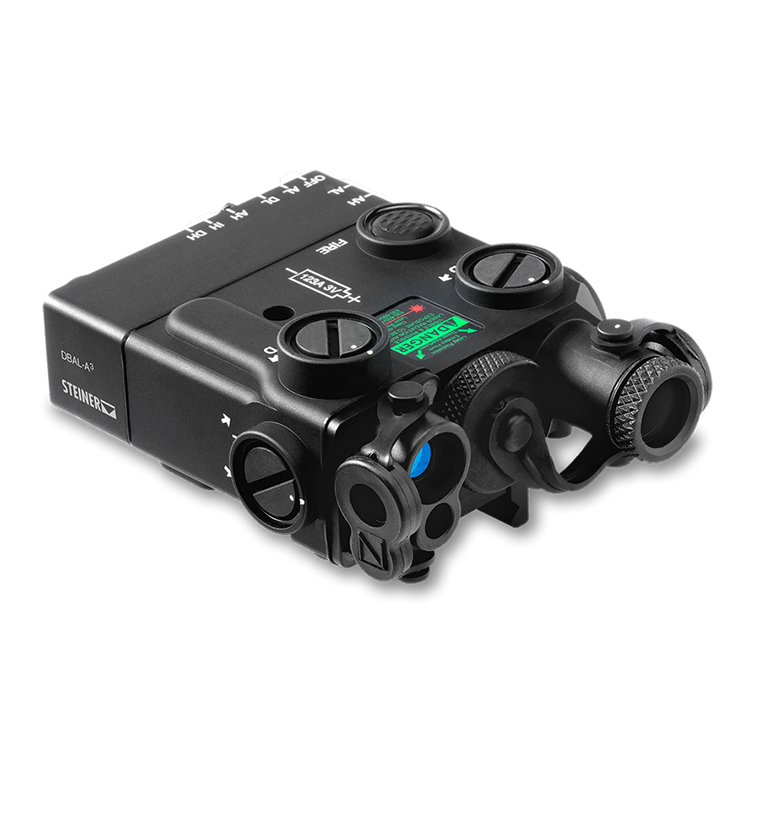
Notice the visible and IR lasers on the left side of this DBAL-A3 as well as the IR illuminator seen on the right.
Source: https://www.steiner-optics.com/sites/default/files/DBAL-A3-black.png
For a top end class 1 laser there is the B.E. Meyers MAWL C1+. The MAWL retails for $2500 and seems to dominate the commercial market lasers in performance. The aiming laser is still a class 1 and therefore a .7 milliwatt laser. Due to FDA regulations, the aiming laser is still more or less the same as any other aiming laser you will find in a class 1 laser. However, the MAWL C1+ has found a proprietary means of significantly boosting the capabilities of the illuminator to truly compete with many of the class 3 units currently available to military and LE on the market today. The MAWL also comes in a package that can be quickly disassembled and reconfigured to allow for ambidextrous use. The sizing and footprint of the MAWL is designed to be used with surefire scout lights and x series lights while still providing easy access to the pressure switches in a way that did not have to change the shooter’s support hand grip.
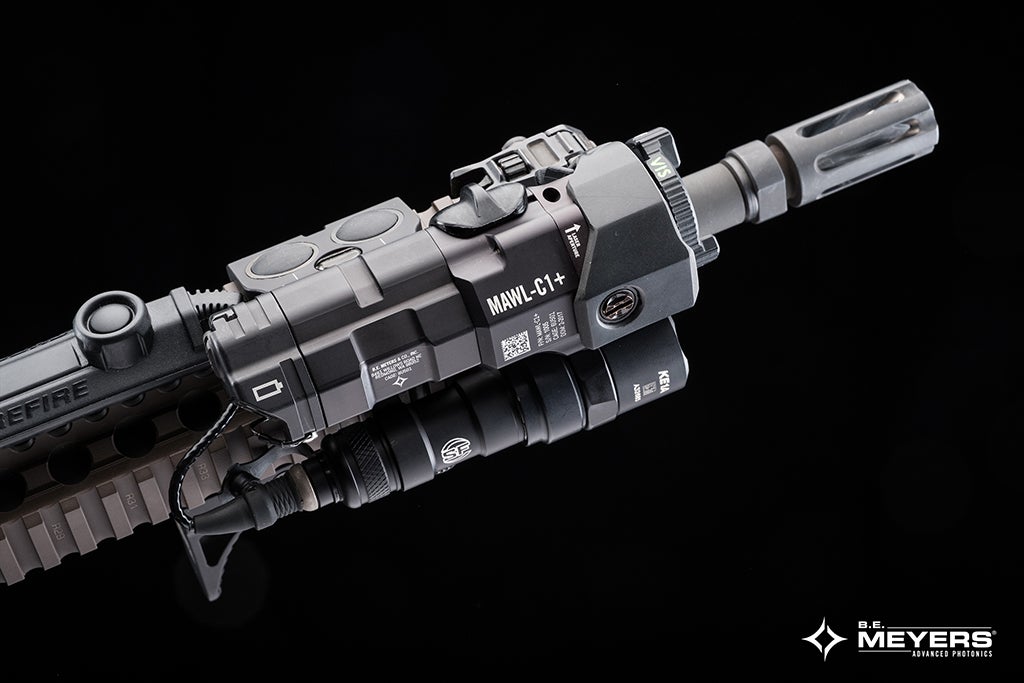
The MAWL was designed to fit the rail while also allowing for the use of a Surefire scout light or x series light for seamless integration.
Source: https://tnvc.com/shop/b-e-meyers-mawl-c1-ir-visible-laser/
The MAWL C1+ and its benefits are best understood by understanding the modes it offers. The illuminator is offered in short, mid, and long range based on an adjustment on the top of the unit. There are also two fire controls that offer different programmed settings for each of the long, mid, and short range settings as seen in the pictures below.
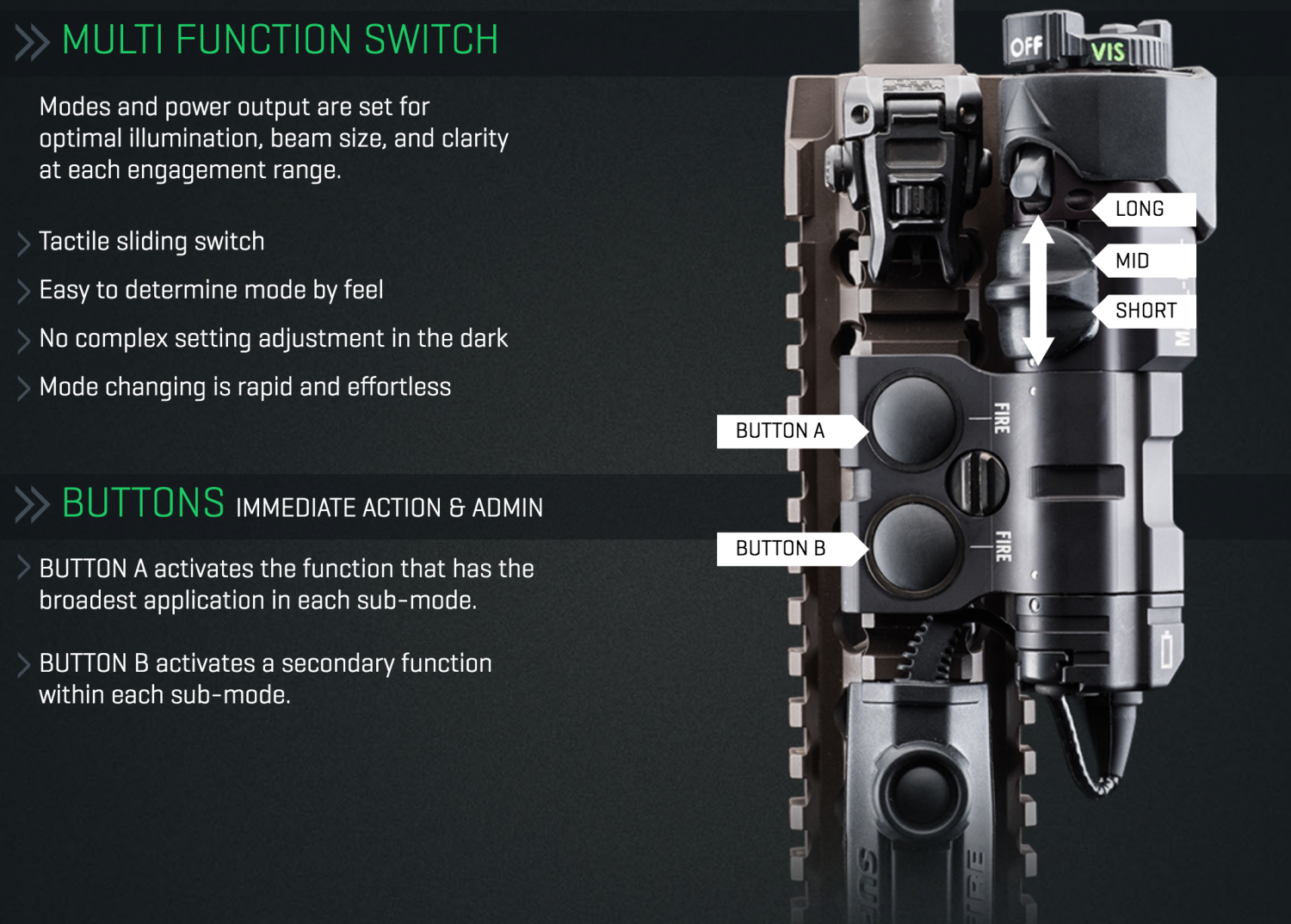
Look at how low profile the switch is for activation as well as the ergonomic and low profile nature of how the MAWL hugs the rail.
http://www.bemeyers-mawl.us/mawl-c1–functions.html
Each of the settings are used for different application. For a wide blooming illuminator at close range, you would utilize the short range setting, allowing for illumination up to 5 meters. As you reach out to the mid and long range settings, the emitter tightens and focuses the beam for less bloom but more penetration for improved visual identification of targets at distance.
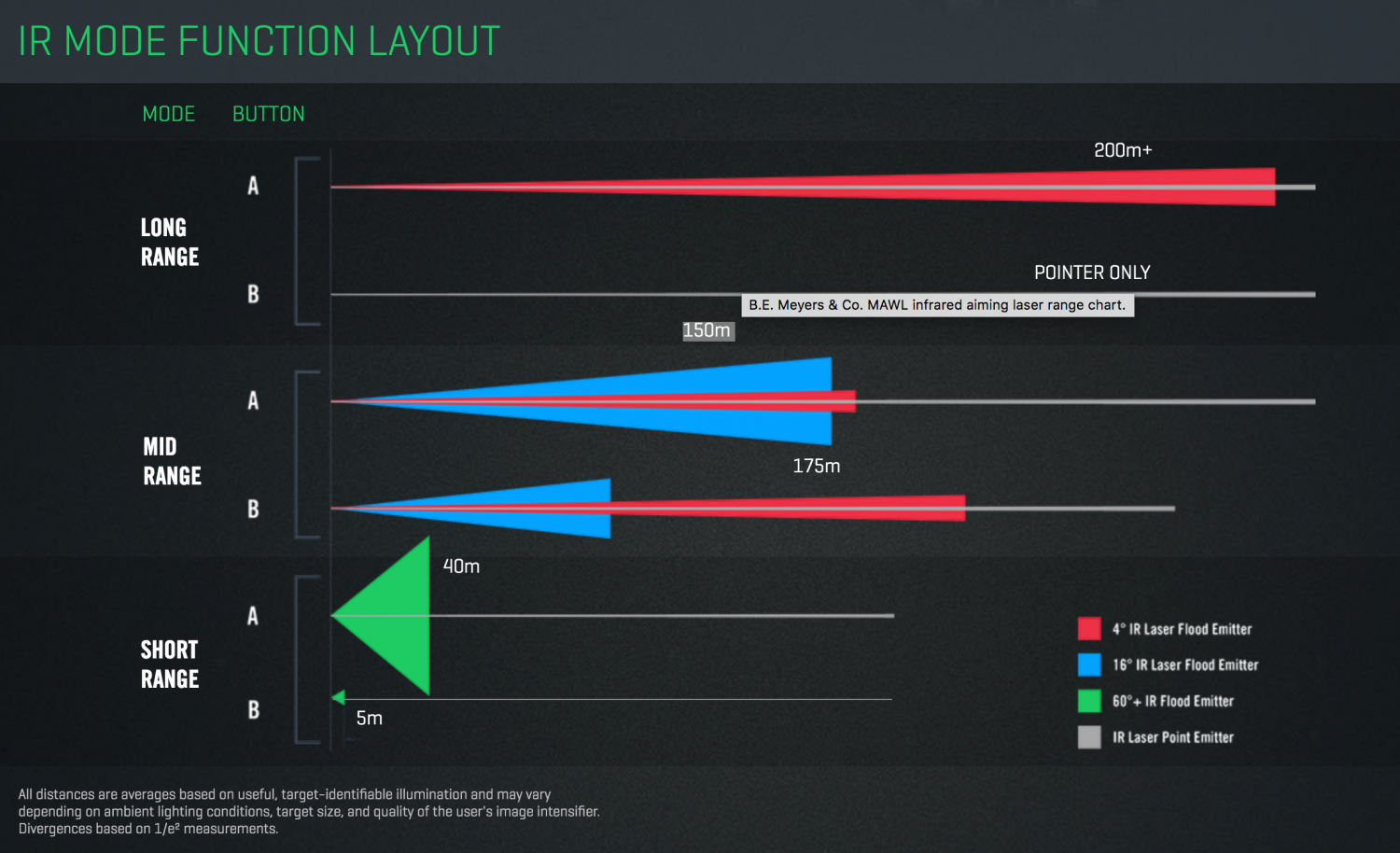
This gives a brief visual explanation of how the activation switches and distance adjustment are programmed.
Source: http://www.bemeyers-mawl.us/mawl-c1–functions.html
The visible laser is also controlled by the distance setting to allow proper settings for indoor and outdoor settings as well as distance for the intensity of the green pointer.
Lasers and helmets are expensive just like anything else in the night vision realm. With lasers, some deals can be found by purchasing second hand. To purchase a new laser, many Steiner lasers can be found on Brownells including the models mentioned above. For anything night vision related, Tactical Night Vision Company (TNVC) is also a great place to not only purchase equipment, but to get more information from their knowledgable staff. If you are looking for a niche or rare night vision device check out Will’s Optics. Will’s Optics has helped many find a less common NOD while also ensuring they give the customer a fair price point.
Like any other tool, each user will need something different and will have a wide variance in budget. For hunters, a bump helmet is a great savings over a ballistic and can add some weight reduction. Due to the incredible output clarity of the MAWL illuminator, the system is hard to beat. However, for someone hunting outdoors with a decent amount of ambient light from the stars and minimal to no tree cover, other laser options could help with some cost savings as well and still meet their needs.
 Your Privacy Choices
Your Privacy Choices
